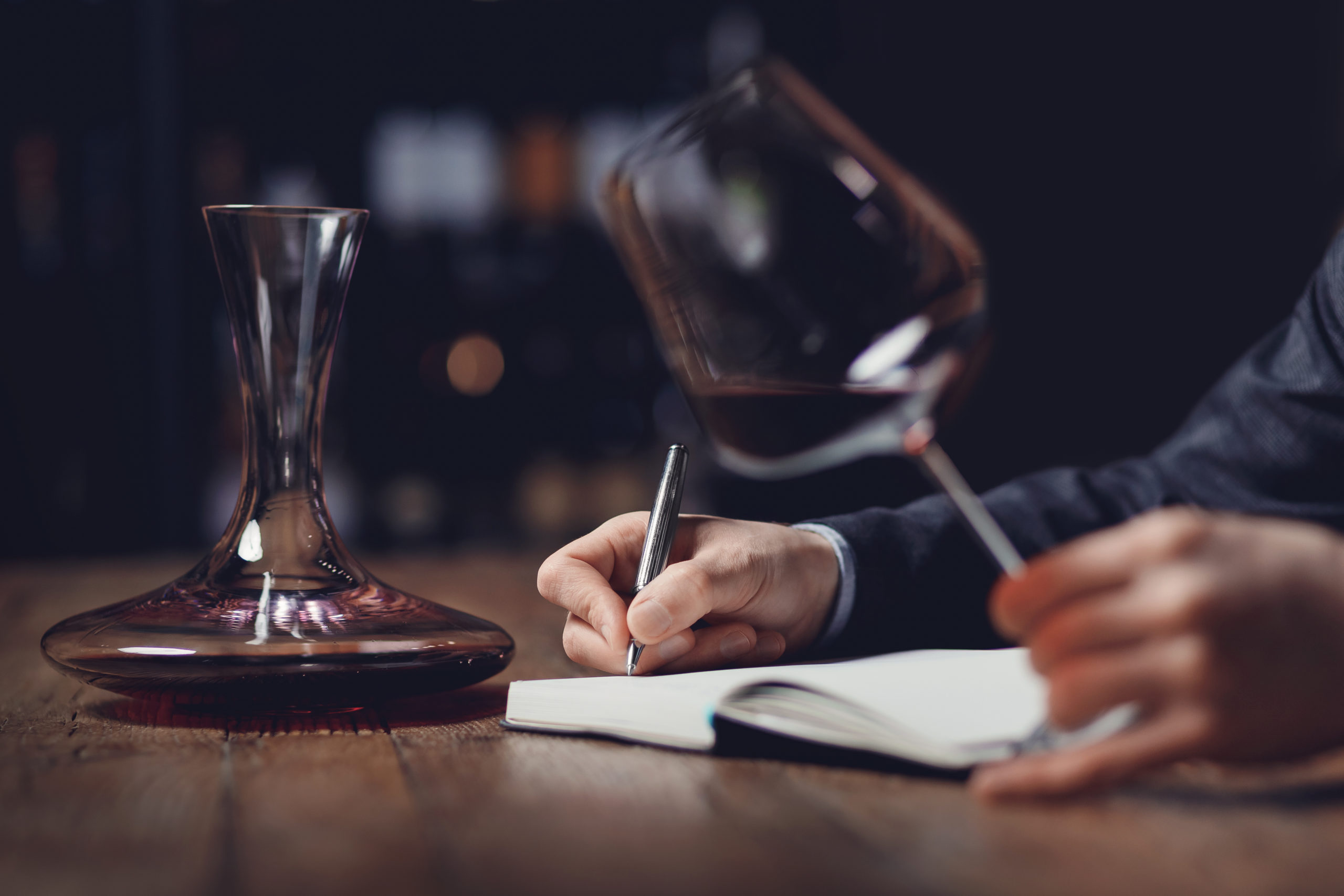Countless studies have shown smell to be the strongest human sense—and the one most closely associated with memory. Like ear training in music or close-watching a film, learning how to catalogue the aromas of wine is a skill that can be improved with practice, creating a reserve of emotional associations that enrich our lives and enable us to communicate the uniqueness of wine to others.
As French novelist Marcel Proust famously articulated in In Search of Lost Time—noting that the aroma of a madeleine cake dipped into tea triggered within him the involuntary memory of his childhood—smell is an exceptionally potent form of emotional transport.
In fact, no other human sense is nearly as strong; in scientific terms, the shelf life of a memory of a beautiful sunset is nothing compared to that of the chemical profile of terpenes, esters, and lactones in a humble glass of wine.
To put the question into context: how long might Proust’s 4,215 page novel might have been if he had been a sommelier? And, after all, could there ever be a better expression of the “Proustian madeleine” than wine—an inherently aromatic product that ties complex variables of nature, craftsmanship, and chemistry directly to the passage of time?
Step aside, Proust; the real aroma professionals are in the house
Due in large part to the influence of the acclaimed documentary Somm—a film which followed a group of Master Sommelier candidates training for the impossibly difficult final Court of Master Sommeliers exam—the public appreciation of wine tasting has finally gone mainstream.
And while few of us may have the inclination to spend a decade or more poring over the aromatic nuances between the communes of Chianti Classico or the complex fruit profiles of Napa’s cult cabernets, wine tasting still has a practical application in our professional work, where sensory identification is a unique skill shared by virtually no other industry (save, perhaps, for botanists, chefs, perfumers, or fin de siècle French novelists).
In the discipline of wine, tasting practice creates an immediate nexus linking a wine’s aroma, chemical properties, natural origins, and factors of human manipulation to our own memory, subjective experience, and body of knowledge. The best part? Aromatic identification is a muscle that we can develop over time with practice and dedication.
Here are four reasons why smell is every wine professional’s secret weapon
- Most sommeliers can assess a wine’s value by nose alone: faults and shortcuts are readily apparent on a wine’s nose, but often much more difficult to identify on the palate.
- Aromatic signifiers trigger unconscious responses: even though taste—a wine’s palate—may be its most accessible collection of flavor signifiers, smell forms a much stronger bond to the taster’s memory, resulting in deeper emotional associations.
- A wine’s nose is inevitably the consumer’s entrypoint: contextualizing the question of “what smells good, and why” is the fundamental responsibility of sommeliers and trade professionals—and a make or break moment for every glass and every consumer.
- Aroma communicates a set of values: what variety is this? Is this wine oaked? Is the oak French or American, new or used? Was sulphur added? Was it a warm or cool year, and where is this wine from? Who is this wine for? Knowing the answers to these questions, the wine professional can tell an impactful story and make an effective recommendation.
The more we practice the skill of recognizing aromas to the point of being able to identify a wine and characterize its qualities, the more we are able to automatically identify wines that we, and our friends and guests, will enjoy. Just as a particular song tied to a key moment in the past can trigger a flood of memory—physically manifesting as goosebumps, euphoria, heartbreak, or hope—the simple act of smelling a wine can take us to a higher plane.
So, how can we improve our aromatic memory?
- Take a hike: smell flowers, underbrush, wet logs, petrichor, pine needles, earth, berries and barnyards; take notes of what you smell.
- Learn the names of plants: by tying vocabulary to the senses, wine professionals can speed up their recall of specific aromas, enabling them to create more fully-realized stories about what makes a wine unique.
- Linger at the supermarket: don’t worry, no one will think it’s weird when you’re smelling and comparing the Bosc, Anjou, and Asian pears.
- Always write your tasting notes by hand, on paper: studies show that our memories become more strongly fixed by physical signifiers; it’s easy to forget our iPhone notes, but a tasting notebook fixes our observations to memories much better.
- Buy your partner flowers: lilies, roses, tulips, orchids, daffodils. . . your neighborhood walk may only offer a few of these, but your local florist likely offers all of them—win twice by bringing home flowers for your spouse (and by taking notes for your wine study).
- When tasting, always spit: it may tempting to swallow, but if broad aromatic recall is your goal, taste widely and pace yourself, focusing on smells.
Unlike Proust’s oeuvre, the discipline of wine tasting is one best served by brevity. Even if your view of a wine is inevitably subjective, skip all the adjectives and stick to nouns and verbs—hone in only on what you can smell, and grow from there.


